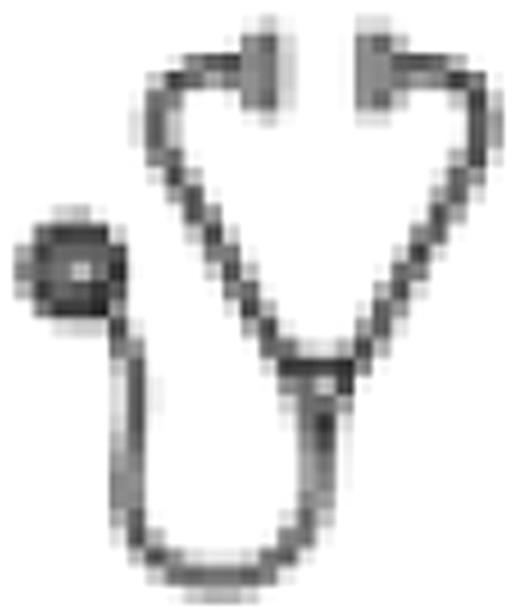Abstract
Hematopoietic stem cell transplantation (HSCT) is the only curative treatment for severe congenital neutropenia (SCN) patients with malignant transformation or with refractory to G-CSF therapy. The follow-up studies of the Severe Congenital Neutropenia International Registry (SCNIR) show that SCN patients receiving G-CSF treatment are at considerable risk of myelodysplastic syndrome (MDS) or acute myeloid leukemia (AML). Recent analysis revealed that the overall cumulative incidence of MDS/AML was 21% after 10 years' G-CSF therapy, in particular, less responsive patients, defined as those requiring more than 8 mg/kg/day of G-CSF, had a cumulative incidence of 40%. HSCT performed after the development of MDS/AML is found to be associated with a high mortality rate (70%). On the other hand, patients underwent HSCT using myeloablative regimens before development to MDS/AML had much better survival rates but remain to be relatively high regimen-related toxicity (RRT). Recently, HSCT with reduced intensity regimens with less RRT has been introduced for other congenital immunodeficiencies. In patients with SCN, HSCT using reduced intensity regimens was found in only a few case reports. We report here three patients with SCN treated successfully with bone marrow transplantation (BMT) using reduced intensity conditioning (RIC) regimens. The characteristics of patients and the regimen for BMT were presented in Table. All patients experienced recurrent and severe infections during the administration of G-CSF. Therefore, patients were underwent BMT with fludarabine-based RIC from August 2007 to October 2008. One patient was transplanted from related donor and the two patients from unrelated donors. All patients rapidly achieved complete donor chimerism with no obvious adverse event. Thereafter, mixed donor chimerism (approximate 50% of donor and recipient cells) has continued in one patient (Case 3). However, ANC in peripheral blood was more than 500 /ml without any obvious infections. Although one patient (Case 1) showed grade 1 acute skin GVHD, no mediation was required since one year after BMT. All patients are alive with no infectious episodes or sequela during observed period. These results suggest that HSCT with fludarabine-based reduced intensity regimen may be feasible treatment in patients with SCN before the development of leukemic transformation and/or intractable recurrent infections.
| . | Case1 . | Case2 . | Case3 . |
|---|---|---|---|
| Age at BMT (years) | 1y5m | 17y | 2y7m |
| Sex | male | female | male |
| Responsible gene | ELA2 mutation | unknown | ELA2 mutation |
| Pre transplant status | recurrent pneumonia | skin, peri-anal abscess | lung abscess |
| Indication for HSCT | G-CSF refractory | G-CSF refractory | G-CSF refractory |
| Graft origin | MUD | MRD | MRD |
| Conditioning regimen | Flu 125/CY 100 L-PAM 70/TBI 3 ATG | Flu 125/CY 160 L-PAM 90/TBI 3 | Flu 125/CY 120 L-PAM 90/TBI 3 |
| Nucleated cells (x108/kg) | 2.9 | 3.7 | 5.1 |
| CD34+ cells (x106/kg) | 2.4 | 6.6 | 16 |
| MUD: matched unrelated donor | MRD: matched related donor | ||
| Flu (mg/m2) CY (mg/kg) TBI (Gy) L-PAM (mg/m2) | |||
| . | Case1 . | Case2 . | Case3 . |
|---|---|---|---|
| Age at BMT (years) | 1y5m | 17y | 2y7m |
| Sex | male | female | male |
| Responsible gene | ELA2 mutation | unknown | ELA2 mutation |
| Pre transplant status | recurrent pneumonia | skin, peri-anal abscess | lung abscess |
| Indication for HSCT | G-CSF refractory | G-CSF refractory | G-CSF refractory |
| Graft origin | MUD | MRD | MRD |
| Conditioning regimen | Flu 125/CY 100 L-PAM 70/TBI 3 ATG | Flu 125/CY 160 L-PAM 90/TBI 3 | Flu 125/CY 120 L-PAM 90/TBI 3 |
| Nucleated cells (x108/kg) | 2.9 | 3.7 | 5.1 |
| CD34+ cells (x106/kg) | 2.4 | 6.6 | 16 |
| MUD: matched unrelated donor | MRD: matched related donor | ||
| Flu (mg/m2) CY (mg/kg) TBI (Gy) L-PAM (mg/m2) | |||
No relevant conflicts of interest to declare.

This icon denotes an abstract that is clinically relevant.
Author notes
Asterisk with author names denotes non-ASH members.

This feature is available to Subscribers Only
Sign In or Create an Account Close Modal